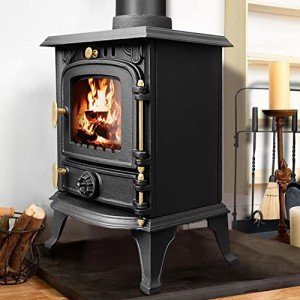Understanding Mixed Fuel Stoves: An In-Depth Guide
Mixed fuel stoves are flexible and efficient cooking home appliances that permit users to harness the benefits of numerous fuel types. While traditional stoves mainly run on a single fuel source, mixed fuel stoves offer flexibility, which can be especially beneficial in remote areas or during power interruptions. This article supplies a detailed overview of mixed fuel stoves, their benefits, types, use, and upkeep pointers, making sure readers are well-informed before buying or utilizing one.
What are Mixed Fuel Stoves?
Mixed fuel stoves are created to operate on more than one kind of fuel, using versatility in cooking techniques. The most common kinds of fuel utilized in these stoves include:
- Wood
- Gas (Propane or Natural Gas)
- Electricity
- Coal
- Pellets
With the capability to switch between these fuels, mixed fuel stoves can adjust to numerous cooking requirements, local accessibility of fuels, and personal choices.
Benefits of Mixed Fuel Stoves
Mixed fuel stoves feature several advantages that make them an appealing alternative for both home and outside cooking. Here are some crucial advantages:
1. Adaptability
- Users can choose their favored fuel based upon accessibility or cooking requirements.
- Ideal for areas where access to a single fuel type may be restricted.
2. Efficiency
- Mixed fuel stoves can offer greater cooking effectiveness compared to traditional stoves, lowering cooking time and fuel usage.
- Some stoves are created to optimize the combustion of wood or pellets, producing less smoke and hazardous emissions.
3. Emergency situation Preparedness
- Throughout power outages or natural catastrophes, mixed fuel stoves remain functional, offering a reputable cooking source.
- Users can stock various fuel sources for emergency situations.
4. Environmental Benefits
- Numerous mixed fuel stoves, particularly those that use wood or pellets, are created to adhere to strict emissions guidelines, leading to a smaller sized carbon footprint.
- Renewable fuel options permit sustainable practices that can support environmentally friendly living.
5. Cost-Effectiveness
- Depending upon local fuel costs, users can choose the most economical alternative for their cooking needs.
- Lowered dependence on electricity can reduce regular monthly energy costs.
6. Boosted Cooking Experience
- Mixed fuel stoves frequently supply a more genuine cooking experience, specifically in outdoor settings for grilling or barbecuing.
Types of Mixed Fuel Stoves
Different types of mixed fuel stoves are available, each with distinct functions and cooking approaches. Here are some common types:
| Type | Fuel Options | Main Use |
|---|---|---|
| Wood-Burning Stoves | Wood, coal, pellets | Residential & & outside cooking |
| Gas Stoves | Lp, gas | Indoor cooking |
| Multi-Fuel Stoves | Wood, pellets, gas, electrical energy | Versatile cooking applications |
| Rocket Stoves | Wood, biomass | Effective outside cooking |
Wood-Burning Stoves
These stoves primarily utilize wood as a fuel source and are popular for their ability to produce an abundant taste when cooking. They can also utilize coal and pellets for added adaptability.
Gas Stoves
Gas stoves can run on either lp or gas and are extensive in domestic kitchen areas. Mixed fuel options permit users to switch to alternative fuel sources if required.
Multi-Fuel Stoves
Designed for optimum flexibility, these stoves can change between wood, pellets, gas, and electrical power, making them ideal for various cooking situations.
Rocket Stoves
Generally utilized in camping or survival scenarios, rocket stoves are effective, frequently using small twigs or biomass, making them perfect for outside cooking.
Frequently Asked Questions About Mixed Fuel Stoves
Q1: Are mixed fuel stoves safe to use?
Yes, when used correctly, mixed fuel stoves are safe. Users ought to comply with producer standards and guarantee proper ventilation to prevent smoke accumulation.
Q2: Can I transform my existing gas stove to a mixed fuel alternative?
Sometimes, yes. You ought to seek advice from a certified professional or producer for expediency and safety.
Q3: How do I keep my mixed fuel stove?
Routine upkeep includes cleaning ashes, inspecting for blockages in chimneys, and guaranteeing all seals and gaskets are intact. Speak with the user manual for specific upkeep tasks.
Q4: What is the best type of fuel for mixed fuel stoves?
The very best fuel depends on individual choices, schedule, and cooking style. Wood provides an authentic flavor, while gas provides immediate heat and convenience.
Q5: Can I utilize mixed fuel stoves inside your home?
Numerous mixed fuel stoves are designed for indoor usage, however it's necessary to follow standards and have adequate ventilation to prevent smoke inhalation.
Tips for Using Mixed Fuel Stoves
- Test Fuel Options: Before selecting a primary fuel source, test different choices to see which yields the very best results for your cooking style.
- Educate on Safety: Always understand precaution, particularly with gas stoves. Guarantee connections are tight and inspect for leakages.
- Tidy Regularly: Keep the stove clean to make sure correct function and prevent buildup of creosote or soot, specifically with wood-burning options.
- Store Fuel Properly: Store fuel sources in a dry, safe location to avoid destruction and guarantee easy access.
Mixed fuel stoves provide a versatile and efficient service for cooking specialists and home chefs alike. With www.fireplacesandstoves.uk to use different fuel sources, these stoves not just deal with numerous cooking requirements but likewise supply a backup in emergencies. By understanding the benefits, types, and maintenance of mixed fuel stoves, users can make educated decisions that enhance their cooking experience while promoting sustainability.
As cooking practices continue to evolve, mixed fuel stoves represent an ingenious service for melding tradition with modern innovation, bridging the space in between diverse cooking practices and accountable fuel intake.

